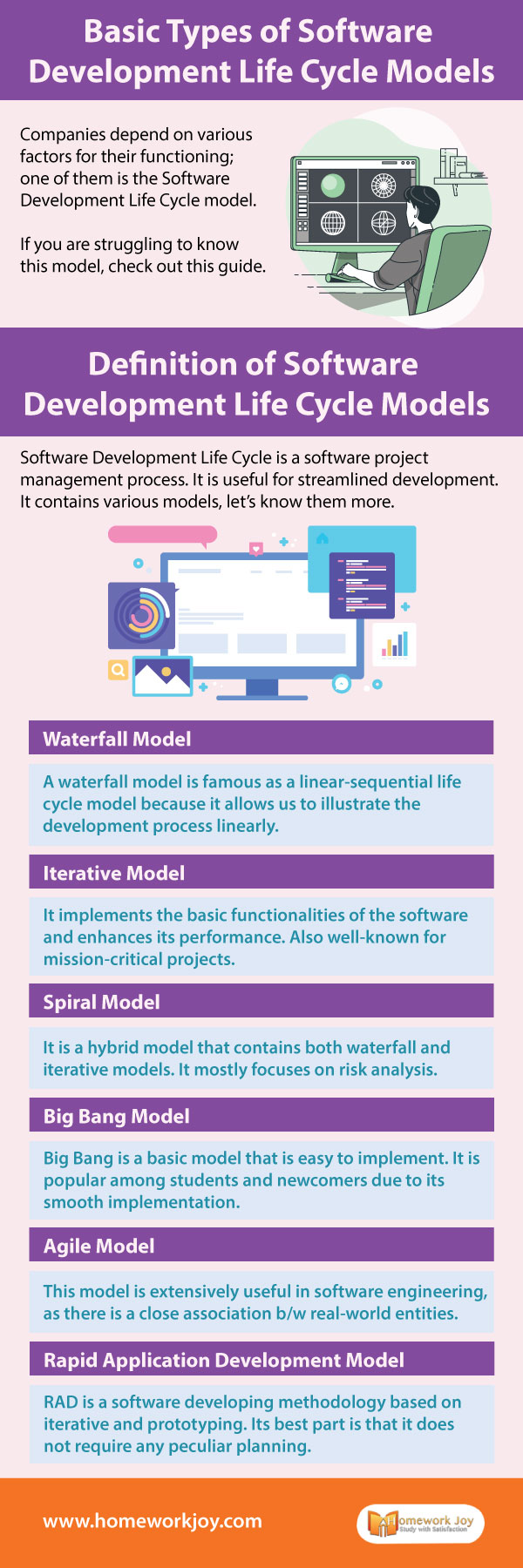Companies depend on various factors for their functioning. These factors vary from employees to different software. However, the Software Development Life Cycle model is prominent. Also, it is highly effective for the smooth operation of a company. So if you are struggling to know this model, check out this guide.
Also, check out some of our latest posts:
What are the Different Types of Databases in Computer?
Definition of Software Development Life Cycle Models
Software Development Life Cycle is a software project management process. It is useful for streamlined development in data science. It contains various models, let’s know them more.
Waterfall Model
A waterfall model is famous as a linear-sequential life cycle model because it allows us to illustrate the development process linearly.
Iterative Model
It implements the basic functionalities of the software and enhances its performance. Also well-known for mission-critical projects.
Spiral Model
It is a hybrid model that contains both waterfall and iterative models. It mostly focuses on risk analysis.
Big Bang Model
Big Bang is a basic model that is easy to implement. It is popular among students and newcomers due to its smooth implementation.
Agile Model
This model is extensively useful in software engineering, as there is a close association between real-world entities.
Rapid Application Development Model
RAD is a software developing methodology based on iterative and prototyping. Its best part is that it does not require any peculiar planning.
Advantages of Software Development Life Cycle Models
The following are some primary advantages of SDLC models:
- Provides a defined view of the entire system, timeline, goals, and resources
- Design reviews assist in ensuring the quality and reliability of the resultant product
- Increased control over the large or complex project
- Incudes clear and comprehensive steps
- Easy assessment of growth and expense
- Debugging and testing of the system can be done in small iterations which deliver errors free final product
Disadvantages of the Software Development Life Cycle Models
To know the weaknesses of SDLC models, check out the following points:
- Increased development cost and time
- Details of the system should be specified in advance
- The volume of record increases with time
- Outmoded processes
- Testing is sometimes not suitable for the whole development teams
- With output at every stage, the final product may be uncertain
- Models like Big bang are not ideal for any large projects by any means
So these were some basics of software development life cycle models that a programmer should know. For more programming homework help, you can rely on us. We are 24×7 available to assist you.
